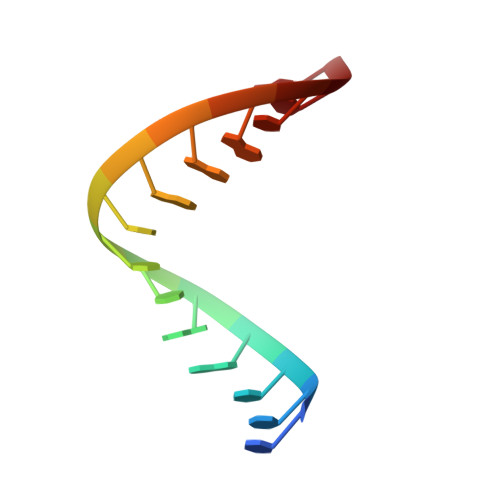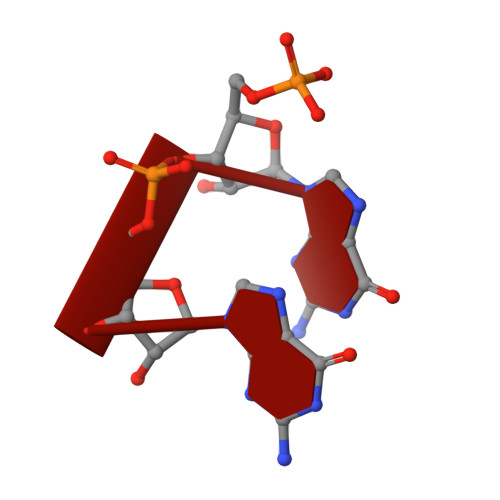Insight into the mechanism of nonenzymatic RNA primer extension from the structure of an RNA-GpppG complex.
Zhang, W., Tam, C.P., Walton, T., Fahrenbach, A.C., Birrane, G., Szostak, J.W.(2017) Proc Natl Acad Sci U S A 114: 7659-7664
- PubMed: 28673998
- DOI: https://doi.org/10.1073/pnas.1704006114
- Primary Citation of Related Structures:
5UED, 5UEE, 5UEF, 5UEG - PubMed Abstract:
The nonenzymatic copying of RNA templates with imidazole-activated nucleotides is a well-studied model for the emergence of RNA self-replication during the origin of life. We have recently discovered that this reaction can proceed through the formation of an imidazolium-bridged dinucleotide intermediate that reacts rapidly with the primer. To gain insight into the relationship between the structure of this intermediate and its reactivity, we cocrystallized an RNA primer-template complex with a close analog of the intermediate, the triphosphate-bridged guanosine dinucleotide GpppG, and solved a high-resolution X-ray structure of the complex. The structure shows that GpppG binds the RNA template through two Watson-Crick base pairs, with the primer 3'-hydroxyl oriented to attack the 5'-phosphate of the adjacent G residue. Thus, the GpppG structure suggests that the bound imidazolium-bridged dinucleotide intermediate would be preorganized to react with the primer by in-line S N 2 substitution. The structures of bound GppG and GppppG suggest that the length and flexibility of the 5'-5' linkage are important for optimal preorganization of the complex, whereas the position of the 5'-phosphate of bound pGpG explains the slow rate of oligonucleotide ligation reactions. Our studies provide a structural interpretation for the observed reactivity of the imidazolium-bridged dinucleotide intermediate in nonenzymatic RNA primer extension.
Organizational Affiliation:
Howard Hughes Medical Institute, Massachusetts General Hospital, Boston, MA 02114.















